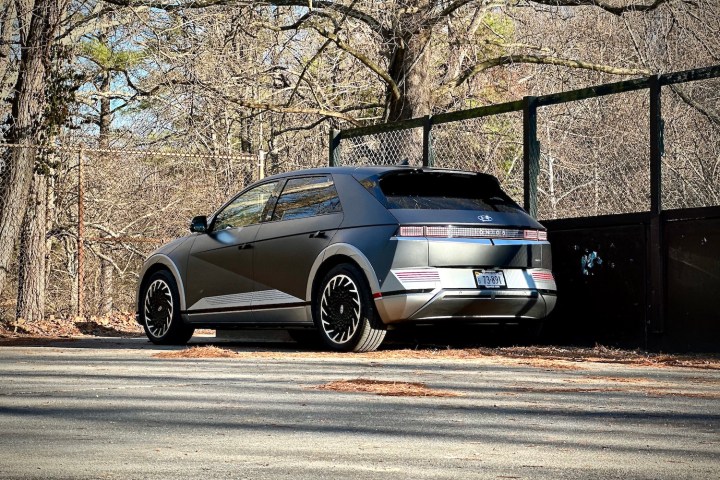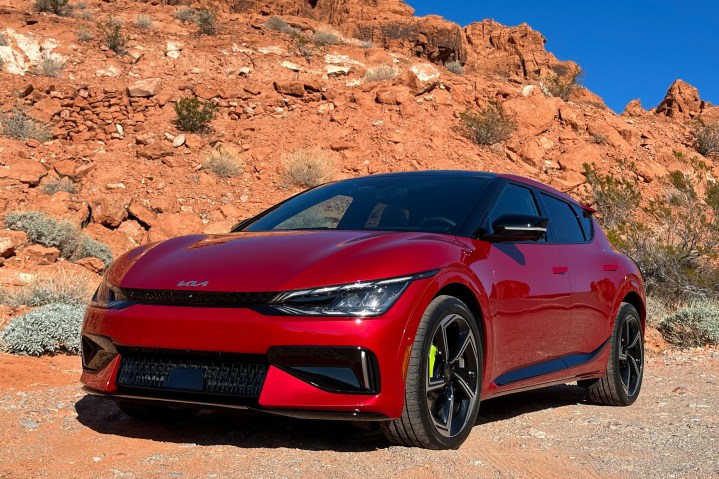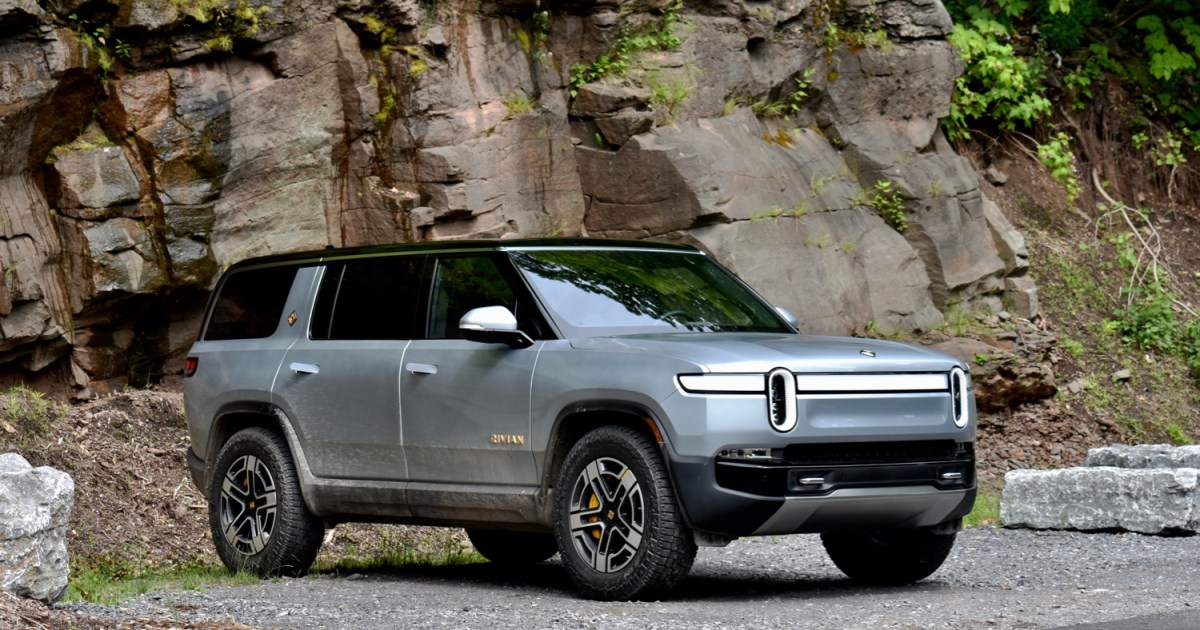The world of car-buying is changing, and quickly. Just a decade ago, the concept of leasing a car was reserved for the relatively wealthy, who simply wanted to be able to trade in their vehicle every few years for a newer, faster model. But cars are changing — they’re no longer simply machines designed to get you from point A to point B. These days, they’re big, rolling computers — and that means that you’re probably going to want to upgrade them much more frequently.
The result? Suddenly, leasing a car has become a whole lot more appealing. Leasing essentially allows you to “rent” a vehicle long-term, paying a monthly fee to drive it for a set term, with the ability to stop paying to use the car at the end of that term. That offers a clear advantage — cars are rapidly improving, and a car released in 2026 or 2027 is likely to be a whole lot better than a car released in 2024, in meaningful, life-improving ways.
But leasing a car has its downsides, the most obvious of which is the fact that when you lease, you won’t be investing in an asset that you’ll own, and at least eventually stop paying for if the car remains in good condition. That begs the question — should you buy or lease an EV? We asked the experts.
Leasing an EV
The big advantage of leasing an electric vehicle is simple — you can regularly upgrade your car every few years, ensuring that you always have a modern ride. That’s a big deal. In a few years, we’re expecting there to be a whole lot more options for electric vehicles, with better ranges, faster charging speeds, and hopefully better software experiences.
“In the current EV market, we believe leasing is the better decision compared to an outright purchase,” said Joseph Yoon, consumer insights analyst for Edmunds, in an interview with Digital trends. “EV technology is evolving rapidly and updates are coming to market at breakneck speed, so it would be prudent to have the flexibility to reevaluate the market in 2-3 years’ time.”

But there are some major downsides to consider when you lease a car — including plenty of fees that you might not be aware of. When you lease a car, your rate can vary based on how much you think you’ll drive it, and if you go over your allotted miles (typically between 10,000 and 15,000 miles per year), you could be slapped with expensive per-mile charges. On top of that, you’ll be charged for any wear or damage beyond the normal wear and tear of using the car for three years — so if anything is wrong with the car, expect to have to pay for it.
So what are the finances of leasing? Well, obviously it depends, and manufacturers offer different deals and discounts for their vehicles. At the time of this writing, you could lease a Hyundai Ioniq 5 SE Standard Range for $229 per month for 33 months, with a $3,999 payment due at signing. With the monthly payment and down payment factored in, you’re paying around $350 per month, though additional taxes and fees may be added to that.
The Rivian R1S isn’t quite as cheap to lease. Rivian is offering the R1S for as low as $699 per month for 36 months, with $8,594 due at signing. All in, that equates to $938 per month, plus any additional taxes and fees.
Separate from these two particular vehicles, it’s generally considered that paying less than 1.5% of the value of the vehicle per month is a decent deal. To calculate this, divide the amount due at signing by the number of months in the lease term, and add that and any monthly fees to the monthly payment to get an average monthly payment. Then divide the monthly payment by the total value of the car, and multiply that by 100.

For the Ioniq 5, the average monthly price comes out to $350 — which is 0.8% of the total price of $43,195. That’s a phenomenal deal, though again, additional fees and taxes in your state will change the equation a little. The Rivian is slightly less so — the $938 average monthly payment is 1.2% of the total value of the car. That’s still a solid deal, but not quite as impressive.
Leasing does have its complications, but depending on your situation, it can be worth pursuing — especially if you have strong credit and have a good idea of how many miles you’ll drive the vehicle per year.
“For shoppers with strong credit, leasing an EV often makes more sense than buying, as they can typically get into a lease with minimal upfront money,” said Brian Moody, executive editor at Autotrader and Kelley Blue Book, in an interview with Digital Trends. “Leasing payments are also usually less than loan payments, too.”
Buying an EV
But while EVs are going to get a whole lot better in the near future, that isn’t necessarily a huge deal for everyone. What if you find a vehicle that fits your needs perfectly, has a long-enough range for you, charges quick enough for you, and has software that you like using? If you’re confident that you won’t change your mind in a few years, even when more appealing options become available, then perhaps it’s better for you to buy.

Over the first three years of financing an EV, you’ll pay more than if you leased it. The same Ioniq 5 SE Standard Range that costs an average of $350 per month to lease, costs $555.70 per month for 60 months with a $10,000 down payment. If you paid $3,999 down instead (like you would if you leased), your monthly payment would be $653.27 per month. The same Rivian R1S that costs an average of $938 per month to lease, would cost $1,537 per month for 60 months to finance, with the same down payment of $8,594.
But while the monthly payments are higher, there are some obvious advantages to buying a car, depending on how long you actually keep it. Most notable is the fact that after the car is paid off, you won’t have any monthly payment. If you were to keep the Ioniq 5 for 10 years, you’d average out to $361 per month after paying off the car in 60 months then not paying at all for the remaining five years. To be fair, that’s still higher than the lease payment — but that lease is a very good deal. In the case of the Rivian, you’d average $840 per month — almost $100 less than the three-year lease payment.
That, of course, doesn’t factor in the value of the car after the 10 years. If the vehicle is in reasonably good condition and you were ready to move on to a new car, you’d be able to trade it in with a dealer, or sell it to a private party, further reducing your average. And that’s without having to deal with any maximum mileage amounts, or the fear of doing even minor damage to the car.

“If you’re the type of buyer that typically drives more than 15,000 miles per year, then leasing isn’t your ideal solution,” Yoon said. “If you’re perfectly content with a vehicle on the list that fully qualifies for the $7,500 tax credit, your household income doesn’t exceed the maximum, and you’re comfortable keeping your vehicle for a long time regardless of residual values, then purchasing could be the better choice over leasing.”
Leasing with the intent of buying
There is another option — and that’s leasing a vehicle with the intention of at least considering buying it, or alternatively, leasing with the intention of buying a different car in a few years.
Often, you can buy an EV after you lease it — though when you do so, you will often pay more for the vehicle than if you just bought it outright. And, if you do so, you’ll have to decide for yourself if the vehicle is worth what the company wants to sell it for — considering the fact that by that point, it’ll probably be around three years old.
To be clear, this often isn’t the ideal solution. You’ll have to deal with the fees that manufacturers impose on the lease, be careful about your mileage in case you don’t end up buying it, and still ensure that the vehicle remains in good condition. But, it could serve as a decent middle ground for those unsure about the rapid advancement of technology but who still like the idea of eventually owning their car.

“Most leases end in two to four years, and at the rate battery technology is improving, EVs within the next two to four years could be much more appealing to a buyer,” said Sean Tucker, executive editor at Autotrader and Kelley Blue Book. “It’s not a bad idea to set yourself up to re-enter the market at a time when EVs and the infrastructure will have both improved.”
So what about the money? Most leases have clauses for being able to buy the car after the lease is up. Hyundai notes in its terms for the Ioniq 5 that customers can purchase the vehicle after the lease is up for $24,189 plus a $300 purchase option fee. Over the lease and the final purchase, you will have paid $36,045. Curiously, that’s cheaper than the cost of outright buying the car — though again, the Ioniq 5’s lease is wacky, and you have to keep in mind the restrictions associated with leasing. Also keep in mind that unless you pay cash at the end of the lease, you’ll likely pay interest on a loan. However, there are some financial incentives to this as well.
“Something to consider if you’re set on purchasing an EV that does not qualify for the full federal tax credit is to “start” your purchase as a lease and then buy out the vehicle from the finance company,” Yoon said. “By leasing first you’ll be able to take full advantage of both the federal incentives as well as any manufacturer or dealer incentives that apply for leasing, and then still have the ability to buy out the vehicle from the finance company once the initial transaction is complete.”
Many car manufacturers don’t advertise how much the purchase price will be after the lease is up — including Rivian. To make a purchase after lease worth the money, the amount you paid for the vehicle over the lease period plus the after-lease purchase price should be at least close to what the purchase price would have been when you first received the car.
The future of car ownership

Ultimately, you’ll have to decide for yourself what the better path is for your needs. Again, however, given how quickly EVs are improving, it certainly makes sense to put off buying a new car for at least a few years — whether that means you lease one now, or you simply drive your current car for longer. Many may want to switch to leasing forever, despite the fact that over time, that will likely end up costing you more.
Other options are coming up too though. A big one is a so-called “car subscription,” which, in some cases, is cheaper than leasing. That’s because car subscriptions typically include insurance, and don’t require an upfront payment, though they do often have a higher monthly payment. Hyundai offers a subscription right now, called the Hyundai Evolve+ EV subscription, while Volvo and Porsche have their own programs.
Regardless of how you end up with your next vehicle, it’s important to do the math and make sure that you’re getting a decent deal before you get it. It’s easy to see the sparkly new EV on the lot and make concessions to get it into your driveway — but you could save some cash if you take your time and do your research first.

